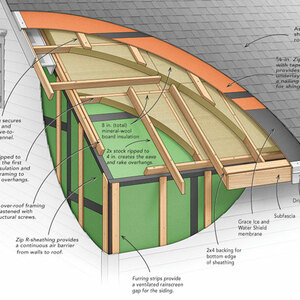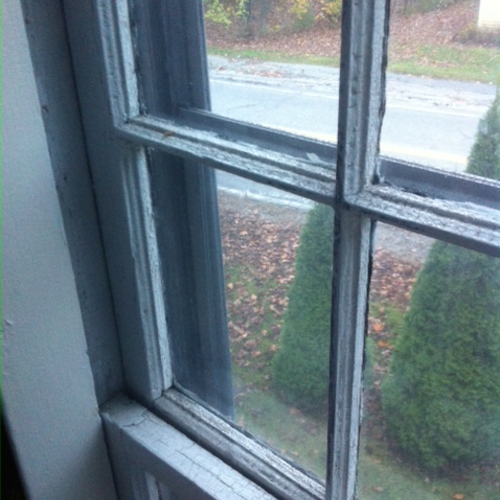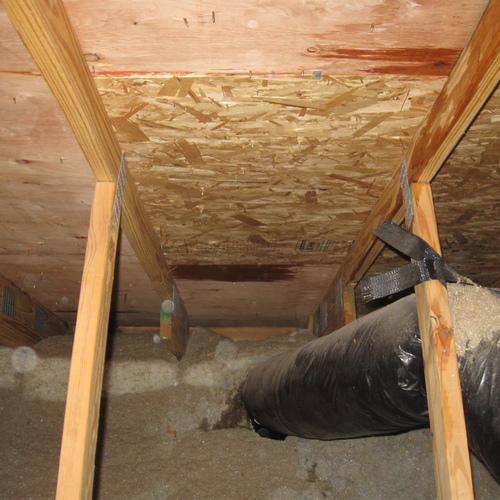
Writing from Edmonton, Alberta, a GBA reader named PJ109 is looking for advice on how to renovate the exterior of a home that was typical for its era but is well short of more contemporary standards for energy efficiency and comfort.
The two-story house was built in 2000 with 2×6 walls, an interior 6-mil poly vapor barrier and fiberglass batt insulation in the stud cavities. On the exterior is OSB sheathing, two layers of black felt and vinyl siding. A recent energy audit pegged air leakage at 5.5 air changes per hour at a pressure difference of 50 pascals—not exactly airtight. The existing windows are double-panel with a U-factor of about 0.51, which translates to a R-value of 2.
PJ’s advisor has suggested new, triple-glazed windows, an upgrade that by itself would eat up between $17,000 and $24,000, two-thirds of his entire rehab budget.
“The more research I do the more it appears I should focus on air sealing,” PJ says in this recent Q&A post. “I am thinking of focusing my attention on the exterior by completely removing the siding and felt paper and starting from scratch while leaving the windows for the time being.”
PJ sees two likely options:
- Tape the seams of the OSB sheathing, seal the sill plate, add Tyvek commercial D (wrinkled) water-resistive barrier, and then two layers of 2 1/4-in. EPS insulation. Vinyl siding would be installed over a 1/2-in. rainscreen gap. The R-value would be about 20.
- Tape the OSB and seal the sill plate, then add two layers of 1 1/2-in. mineral wool and a 3/4-in. rainscreen gap for an R-value of about 12.
The first option is roughly 35% cheaper, easier to install, and has a higher R-value. With the second option, using mineral wool insulation, PJ wonders if the exterior insulation is enough to prevent condensation on the…
Weekly Newsletter
Get building science and energy efficiency advice, plus special offers, in your inbox.

This article is only available to GBA Prime Members
Sign up for a free trial and get instant access to this article as well as GBA’s complete library of premium articles and construction details.
Start Free TrialAlready a member? Log in















4 Comments
Would this be a good situation to use AeroBarrier to address the high air leakage rate?
My first thought was to replace the windows and use AeroBarrier to address the air leakage and then see how the building performs before deciding on removing siding and adding insulation.
The article began with a mediocre air leakage score. Warm humid indoor air is evading your vapor barrier. Focus on that first to get more for your money. Did the energy audit locate where the air leakage trouble spots are?
In the photo, there is living space over an attached garage, with complex mix of architectural features. Is that the coldest room at night?
With cold air blowing up through the unsealed eaves above the garage doors and washing over the insulation in the garage ceiling which also contains un(der)insulated ducts discharging under the windows?
I’ve seen this movie.
There are a number in excellent examples of deep energy retrofits going on in Edmonton and Alberta right now. The individual plans all vary but they all start with a plan to get the building as close to net zero on site energy as possible to meet the 2030 and 2050 goals. The general theme is "if you touch it, do it right". In Alberta this means adding at least 4" of exterior insulation to a 2x6 wall. As the building is under 25 years old removing and replacing the siding and windows that are not at the end of life is not a great option for embodied carbon. Looking at the case study that Ecosynergy performed would be an excellent starting point. https://www.ecosynergy.ca/
It consisted of Aerobarrier sealing of the entire house (which can be accomplished without having to move out) then adding as much insulation to the attic, while maintaining soffit venting and then add a ground source heat pump. It can also be done with a cold climate air source heat pump. You can fully electrify the home and maintain the existing 100-amp 240-volt electrical service, using load share devices.
https://www.retrofitcanada.com/ has a number of excellent case studies.
https://butterwick.ca/ is the one you want doing the work.
If you choose to use EPS foam, use it in an EIFS system with a drainage cavity (to allow drying out of the wall) similar to the work done by https://solarhomesinc.com/
Lots of local assistance available, and a growing amount of funding for it as well.
Log in or become a member to post a comment.
Sign up Log in